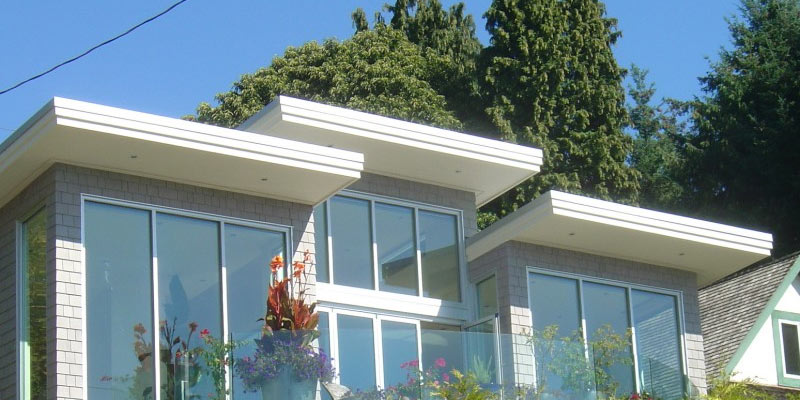
In our latest expert article, we take a look at the advantages & disadvantages of different roofing systems.
The different types of flat roofs are: cold flat roof, hot flat roof and inverted flat roof.
In the case of a cold roof, the insulation is placed under the roof and in the case of a hot roof, on the roof. The third type of roof is the inverted flat roof. This is actually a hot roof with the difference that the insulation layer is placed on the roof covering instead of below. We will discuss first two types of flat roofing.
1. Cold flat roof
We speak of a cold flat roof when the insulation material is placed under the roofing truss. The roof itself is not heated by the space below and is exposed to all kinds of climatic influences such as temperature changes resulting from heat and frost. The structure of the roof and the sealing layer will therefore contract and expand, which can cause damage after a certain period of time.
A cold flat roof should for this reason alone be avoided as much as possible. In some cases however, when there are technical restrictions and insulation according to the principle of hot roofing can not be achieved, this option can be chosen. The reasoning here is that isolating is always better than not isolating at all.
Cold flat roof insulation construction
For the insulation of a flat roof, glass wool or rock wool is generally used between the beams of the vault. If it is a concrete ceiling, a wooden construction is usually carried out (false ceiling) in which the insulation material is placed. In these systems, it is important to ensure a good vapor tightness, otherwise there may be condensation problems.
Cold flat roof insulation: the benefits
When a hot roof construction is not possible, this method is far better than the total lack of roof insulation.
Cold flat roof insulation: disadvantages
In the case of a cold roof, the risk of condensation is always present. The construction itself remains unprotected against climatic influences.
2. Hot flat roof
It is called a hot flat roof when the insulation material is placed above the roof structure. The great advantage of this system is the protective function provided by the insulation material. The roof is gradually heated with space below and is therefore less prone to large temperature variations. As a result, contraction and expansion voltages in the roof structure and in its seal are much lower. Another advantage of a hot flat roof is that, depending on the type of insulation material, you can walk on it (to a greater or lesser extent). The hot roof is one of the most used flat roofs.
Construction of the insulation of a hot flat roof
On the structure of the roof, a vapor barrier layer is first applied. This prevents damp air from condensing in the insulation material. Above this sheet, insulation panels are laid which are insensitive to contraction and expansion, for example rigid panels of foam, PIR, perlite or EPS. The panels are as much as possible fixed on a slope. Thus, a good evacuation of rainwater is guaranteed. Above the panels is finally the roof covering which acts as a waterproof layer. The roof covering can still be finished with gravel or slabs. Depending on the thickness of the insulation material, it may be necessary to raise the edge of the roof.
Benefits of hot roof insulation
- Offers good roof protection
- Good insulation function
- The corners are easier to isolate
Disadvantages of hot roof insulation
- Intensity of labor
- To be executed only by favorable climatic conditions
- Risk of damage to the roof covering.
